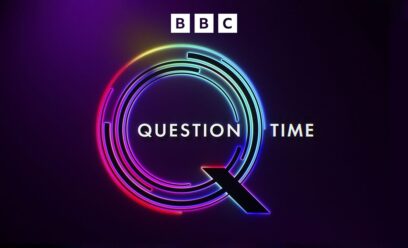10 top tips to filming yourself on your phone at home
Posted by Katherine Maxwell-Rose on May 14, 2020During the Covid-19 pandemic we are all having to adapt to new ways of working. Many smaller grassroots organisations need to be able to communicate with their core audience and network in a quick, accessible way. The Luton Roma Trust asked IMIX to deliver some training on how to create short video messages so that they could share important information on Covid-19 with their community. Here are some key points which were covered.
1. Don’t worry too much!
No one is expecting your videos to look like the BBC or Sky News. The rise in popularity of social platforms like SnapChat and Instagram Stories has meant that lots of people are videoing themselves informally on their phones and sharing the videos publicly. Even before the pandemic forced people to work from home this style of rough-cut, relaxed videos was being used by many different people and organisations to get their messages across. Your videos don’t need to be perfect – the most important thing is that they are clear. Most of the time they will also be pre-recorded too so you will have a chance to do it again if you forget what you are saying or there is a technical problem.
Take comfort from the fact that even if you are an experienced BBC weatherman you are not immune from making mistakes!
2. Think of your audience
You know best who you are talking to and what they want to hear about. What do they need to know about at this time? How would they like to have this information communicated to them? Try to have them in your mind when you are planning and recording your video. The likelihood is they trust you and will want to listen to what you have to say.
3. Keep it short and simple
Try to communicate one main message per video. There is a lot of changing information to absorb right now and many people are already feeling stressed and anxious, so try not to overload them by saying too much all at once. It’s much better to do several short, simple videos rather than a long one where people may lose interest and not finish watching it.
4. Make sure the light is on you
As well as getting your message as clear as possible, it’s really important to make sure that people can see your face. Don’t place yourself with a window or a lamp behind you because you will just be a shadow on the screen. Some light should fall on your face – so you could stand facing the window or a lamp or with it to the side of you. But do make sure that the light isn’t too bright on your face – you may need to slightly close the curtain or again you will look too much like an alien! If you are not sure, then film yourself in position for a few seconds and watch it back. Check if you can see your face – people want to be able to see your eyes and your lips moving. When people see your face they will build up a greater sense of connection with you.
5. Get the phone in the right position
Make sure the phone is level with the top of your head so your eyes are looking right at the top of the camera. Try not to have it below eye level as it is an awkward and unflattering angle. You may need to construct a tower of books and find something to lean your phone on to keep it in place. Try not to stand too close or too far away – make sure people can see all of your head and shoulders. You want the phone to be static and not moving around as that is distracting for the audience. Here are some reviews of simple, reasonably-priced tripods if you have a bit of budget and this one also comes with a wireless remote which means you won’t have to touch the screen to switch it on and off. It may take some playing around with the space but once you have found the right spot to film in – use this every time. In the Instagram video below the author Poorna Bell places herself in a good, relaxed position to record herself – note that the phone is still, you can see all of her face and she is looking right at us. You will see that all her videos are shot in the same place.
https://www.instagram.com/p/B-ZVrzvnveZ/
6. Find a quiet spot
Try to find a quiet place to film where you won’t be disturbed. Close the windows and doors. Some background noise is expected so don’t worry too much about that. Do speak clearly though and not too quickly. Acquiring a small mic which you pin onto your clothes and plugs into your phone can really help with sound quality but is not essential. This one has good reviews and costs less than £15.
And if you do get interrupted, remember it also happens to the experts!
7. Add subtitles
Lots of people watch videos on social media with the sound off – this means that subtitles can be essential in getting your message across. This can also really help if the sound quality isn’t that good. A simple video editing app like Spark Video is very user-friendly and allows you to add captions as well as insert slides. This list is really useful in helping you find the video editing app which works best for you.
8. Don’t use a script!
Write your main points down before hand and have them somewhere you can see them to remind yourself of what you want to say. Don’t write a whole script though because it will come across as overly-formal and you will be worrying about remembering all the words. A natural style is best and it doesn’t matter if you make the odd mistake. A practice beforehand is a good idea and you can always record again if you need to.
9. Relax and be yourself!
You don’t need to pretend to be someone you are not – so try not to make yourself sound like a news presenter or put on any different kind of voice. You want people to trust you and being yourself is the best way to achieve that. Smile, be warm and remember you maybe looking at a screen but you are talking to people. In the below video Md adopts a lovely natural style to tell his audience what he has been up to during the Covid-19 pandemic.
10. Don’t spend too long on it.
It’s easy to become a perfectionist when it comes to making a video like this and spend hours trying to make it just right. Give yourself a time limit and stick to it. Even if there are a few imperfections, most people won’t notice them. Remember the most important thing is to make your message clear and simple!
This is a great video from the Scottish Book Trust which also talks you through some great tips for filming yourself at home.
It can be hard to take the plunge and record your first video, but the best thing to do is just to start doing it and learn as you go!



